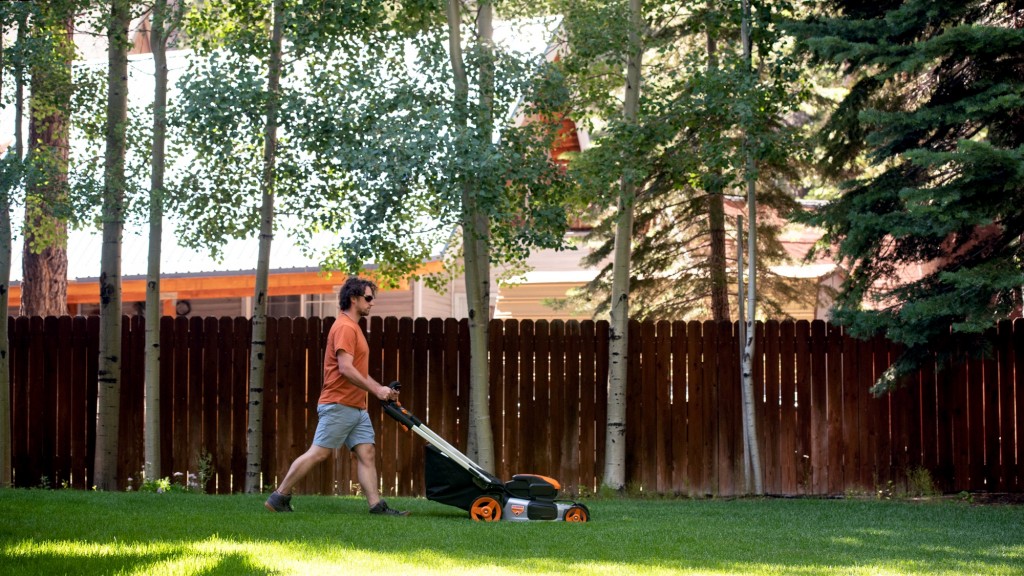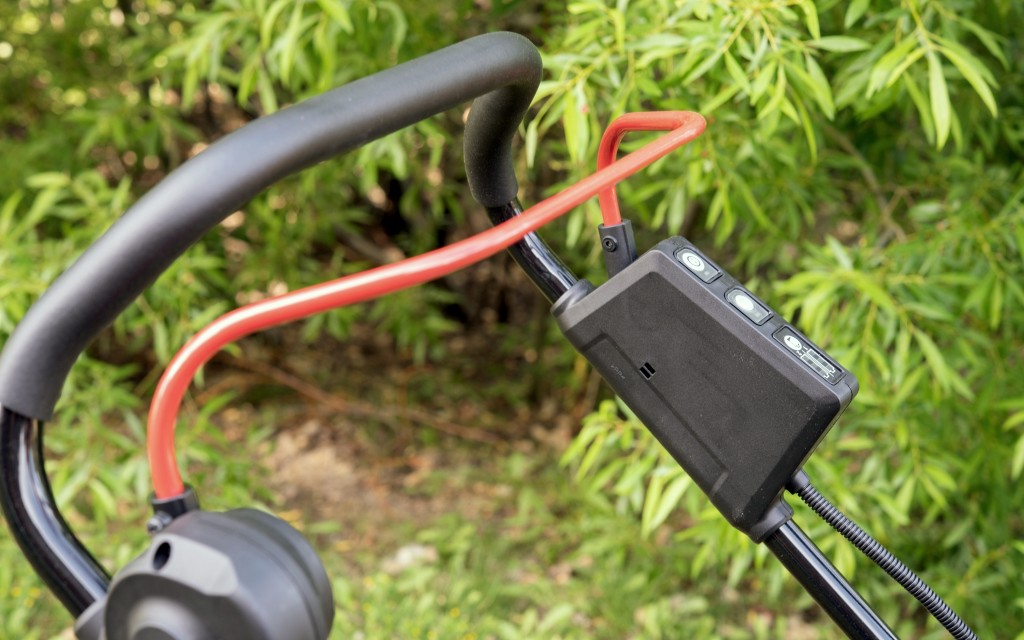Our testing methods are focused on producing data that facilitates direct comparisons between products of a particular class. In contrast to many of the other electronic items that we have reviewed, creating standardized tests for cordless lawn mowers proved to be a bit more challenging. This is likely the reason why many of the reviews available for these machines are anecdotal or superficial.
There are two primary factors contributing to the difficulties broached above. One is the lack of uniformity in lawns. Not all lawns have the same grass species, grass density or grass length. Thus, mower run times and square footage assessments are likely to be skewed by these uncontrolled variables. Using the same lawn repeatedly poses similar problems as the grass will present differences in growth and moisture content from one week to the next. The second obstacle in the path of testing uniformity is the inconsistency in the mowers themselves. The cutting deck width and batteries for the models in our review often differ, as does the machine's method of propulsion.
Acknowledging these problems is the first step in solving them. The next step is to create tests that mitigate these issues. We labored to structure tests that render comparable results between the mowers in our review. Therefore, consumers looking for the best electric mower for their needs and budget can feel confident that their purchase will live up to their expectations.
Our tests are grouped by lawn mower features or characteristics that we call metrics. Each metric is worth a certain amount of points and is weighted to account for the importance that the analysis has on overall user satisfaction with the product. When summed, these points establish the ranking of each mower. The metrics and the contribution that each makes to the final ranking are as follows: Mowing (35%), Battery (25%), Handling (25%) and Ease of Use (15%).
Mowing
This analysis is the meat and potatoes portion of our testing regime. We want to know if these machines are cut out to do the work that we've come to expect from their gas-powered ancestors. Part of this is an assessment of the dimensions of the mowers. Namely, the cutting deck width, edging gap (the strip of grass left when running the mower along a wall or cub) and the range of cutting heights. The other part of the mowing evaluation is an assessment of the machine's power. More specifically, how well will these electric mowers handle the demands of tall grass and nappy weeds. Also, can they mulch properly? Well, let's get into how we answered these questions.
Height Adjustments
Experience has taught us that a product's side-of-the-box marketing claims are not always accurate. To address this reality we measured the cut grass height for the high and low settings on each mower reviewed to confirm the manufacturer's claims. This is particularly important on the low end as giving your grass too short of a trim can cause some serious problems. Additionally, we calculated the range of cutting heights for each model in the class — that is, the difference between the shortest to the tallest cutting height. This is useful information as some models do not support the longer cutting settings that some grasses and landscaping styles require.
Dimensions
Want to cut a wide swath on the neighborhood landscaping scene? Well, this part of our electric mower evaluation gathers and collates all the pertinent dimensional data to ensure that your mower will be a good fit for your yard. Here we measure all aspects of the cutting platform of the mower. These are the inside wheel width (which is the maximum cutting width of the machine), the blade length, and the gap between blade and cutting deck — the primary contributor to the cutting gap. With the aforementioned dimensions of each machine, we are able to approximate how many square feet of grass each mower can trim given its run time.
Power
Our power submetric evaluates the effectiveness of these machines when they are put on exacting jobs. First, we look at the mowers' mulching capability. Many readers may know, but for those of you that don't, mulching is the fine chopping and dispersal of grass clippings while mowing. Next, we step up our demands by putting the mowers up against some shaggy grass representative of what a lawn might look like after returning from a two-week summer vacation. This exercise is also run with the mower in the mulching mode. Finally, we take the mowers off the beaten path. In this last and most demanding evaluation, we run the mowers in grass so tall that it's usually considered the domain of weed whackers.
Battery
Electric mowers offer many advantages over their gas-powered predecessors. However, the batteries that power these machines raise concerns for many people. These concerns focus on how long the batteries will power the mower, and how many square feet of turf can be cut in that amount of time. Additionally, many wonder how long it will take for the batteries to recharge when they are depleted. These are valid concerns and as such, we tested each unit to get answers to these questions.
Run Time
First, we looked at each mower's maximum run time. Run time, and how that translates to square footage of cut law, is the most difficult aspect of mower performance to assess due to the inconsistencies in turf density, grass length, topography and moisture from one lawn to the next. In order to limit as many of these variables as possible, we ran these machines without a load — meaning that they were not cutting grass but the blades were spinning — until their fully charged batteries were completely exhausted. We call this value run time.
We took the run time for each model and estimated the square footage that they could mow based on the internal wheel width (which allows for the proper overlapping on each pass) of each machine and a conservative walking pace of 2.5 mph. We then ground truthed the results of our equation with two randomly selected mowers from the review group. In these quality control tests, we mowed the same lawn. The turf surface was flat and the grass was well maintained with a week of growth since the previous cutting.
Okay, bad news first. Our equation overestimated the square footage a mower could cut by ~100%. The good news was that the overage was uniform for both machines. This made adjusting our equation rather easy as we simply divided the estimated outcome by half. In doing so we rendered a far more accurate estimation of what these machines are capable of accomplishing.
While we are confident that the relative differences between the machines are accurate, the square footage estimates are just that — estimates. There are other variables that complicate the matter. Some models have two batteries powering the motor. However, some models that run off two batteries are sold with just one batter. For direct comparison, we ran all models with the batteries that they were sold with and then doubled the run time on those models that take two batteries but are sold with just one cell. Additionally, some models have a propulsion system driving their wheels. We made no adjustments for this variable. Finally, some models have “turbo” settings that offer the user more power (at the cost of battery life) if needed. We did not engage this setting during our battery tests.
Recharge Time
Having completely drained the batteries in the run time tests, we simply placed each unit's battery or batteries on their respective chargers and set a timer for each one. Every model has a way of indicating to the user that the battery's charge is complete — whether that's a light that changes color or stops blinking or simply lights up. When the charge was complete we turned off the timer and recorded the time elapsed.
Handling
Gone are the days when one would repeatedly yank on a starter cord to fire up a noisy internal combustion engine just to cut the grass. In our handling and ease of use analyses we look at all the aspects of a mower that, when adequately addressed, make the machine a pleasure to use.
To get at these details we first look at the starting mechanism. Is it straightforward to engage? Is there a delay? Once it's running, how loud is the machine? In this evaluation we use a sound pressure level meter to measure the noise from the cockpit (i.e. where the user would be standing) while the machine is on turf.
Next, we scrutinize the bail, which is the bar on the handle that, when depressed, engages the mower's cutting blade. It may seem a bit nitpicky, but back in the gas mower days, these things were pretty uncomfortable to grip after a short period. If the spring is too stiff, or the diameter of the bar is too small, it can be quite uncomfortable. Wanting to avoid this experience, we rate the stiffness, shape and resulting comfort of this component.
Additionally, we evaluate how these machines feel when in motion. We take stock of which models are self-propelled and which lack this convenience. We look at how difficult it is to push the mowers. We also rate the maneuverability for each model. That is, how they perform in tight spots and around corners.
Ease of Use
The ease of use metric addresses all of the little details that can disrupt the meditative effect of mowing the lawn. Specifically, we want to quantify how easy it is to check the remaining battery life and how easy it is to remove the battery when it's time to recharge the cell. Additionally, we rate the ease of storing these machines. Most of these models fold up into a compact size, and given that they do not have any fluids to leak onto the garage floor, they are often designed to stand-up vertically to further reduce their storage footprint. Accordingly, we rate the effectiveness of the folding design.
Conclusion
In the above review we asked and answered all the questions that we, as consumers ourselves, would want to know before making a purchase. We put the information derived from our battery of tests into a format that allows easy comparison across products while maintaining the technical details that many of our readers desire. It is our hope that you find this work useful and informative. We had a lot of fun using these machines, and we believe that this review will aid you in finding a mower that you'll enjoy as well.









